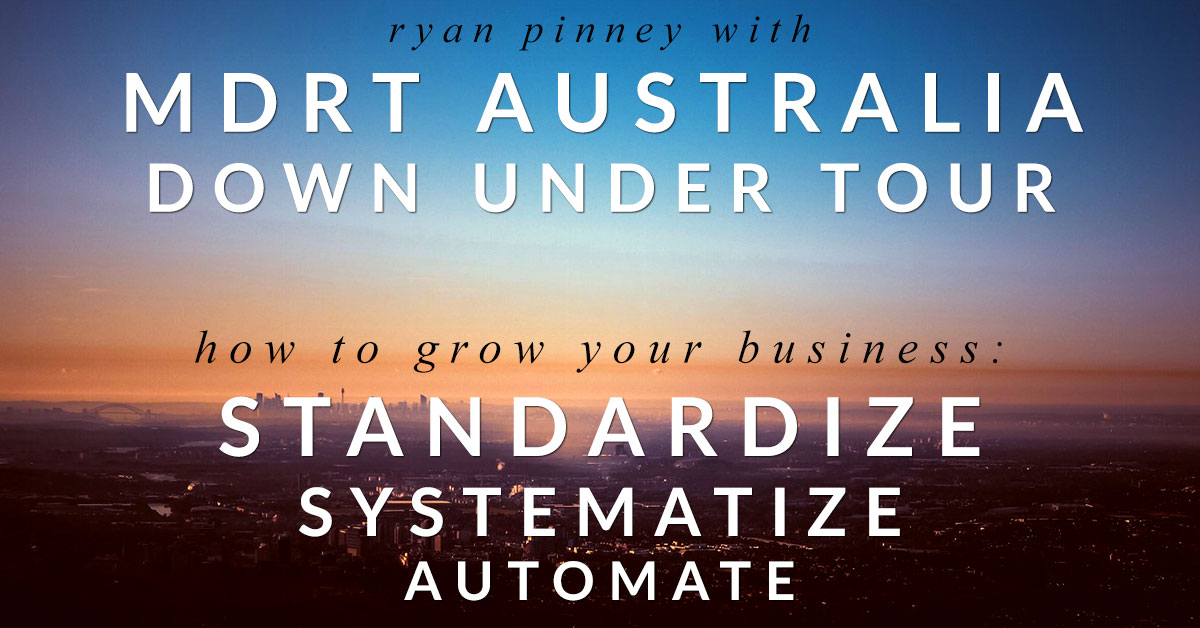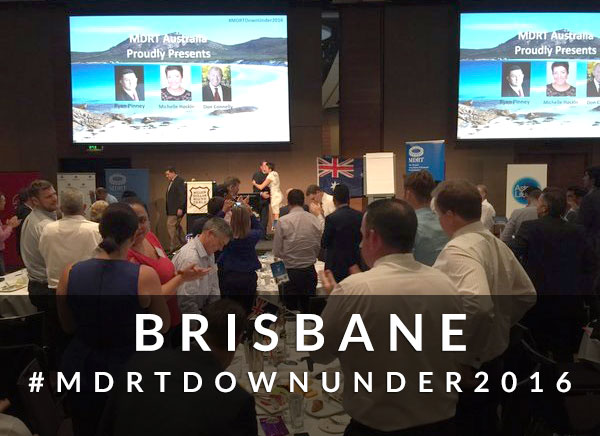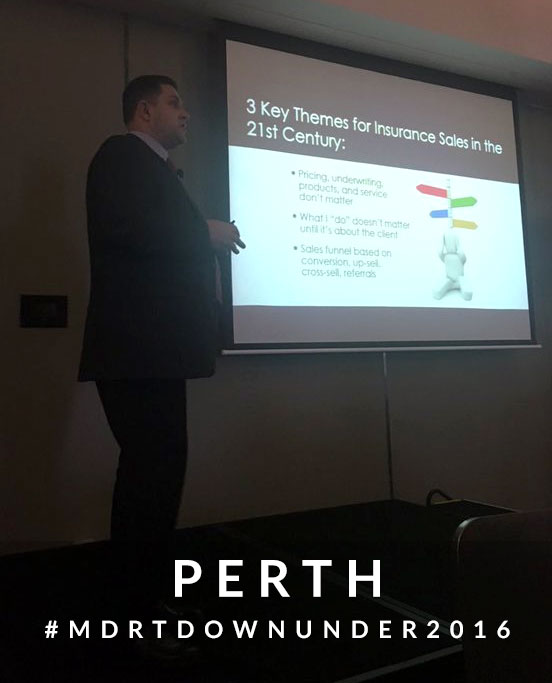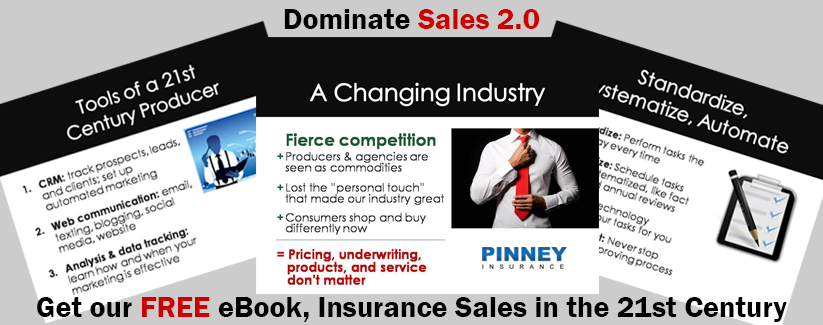
Ryan Pinney has been on the road, speaking at the MDRT Down Under Tour 2016, presented by MDRT Australia. He’s been talking about the principles of standardize, systematize, and automate – the same principles we apply here at home. When applied correctly, they can help you better engage your prospects and grow your sales as a result.
Standardizing your workflow is only part of the solution, however. This is the conclusion we came to after learning more about our customer base – and how we can reach them at the critical moment when they’re ready to say yes to life insurance. The idea behind automation is that it frees you up to pursue initiatives you can’t automate. Sounds easy, right? But there's one catch:
Automation doesn’t work unless you’ve already mapped and optimized your buyers’ journey.
In other words, you have to figure out who your customer is, when they interact with you, and how to engage them at these critical junctures. Only then can you use automation in a way that's helpful to you and your prospect.
Step 1: Know Your Customer
Until you know who’s buying from you – and who’s not – you won’t know how best to reach them or what message to send. Our research pinpointed a specific breakdown among our target consumers:
- 3% would buy from us at any time.
- 7% would buy from us because we made a compelling argument or a good impression.
- 20% would never buy from us, no matter what we said.
- 70% would initially say no, or go home and think about it.
It’s that 70% we wanted to focus on.
How could we increase the number of buyers from this particular pool of prospects? What are their issues and pain points? If we can focus on solving those problems, we have a greater chance of maximizing sales without wasting time trying to sway the 20% who won’t buy from us no matter what.

Step 2: Connect with the 70%
More research and follow-up revealed that 84% of our 70% would end up buying a product or service over the next 24 months.
That may seem like a long time to wait, but when you break down the engagement cycle, you’re taking that customer on a journey from “I don’t know anything about life insurance” to “Yep, I know what life insurance is and I need some – let’s do this.” Depending on how educated or aware that consumer is when he enters your sales cycle, that might be a very long journey...and in our case, it often took 24 months to get there. Remember, you can control what kind of information you provide to this prospect, but you can't control his busy life and how he chooses to prioritize his financial needs. Just worry about what you can control - the information you provide and its relevance to your prospect's problems.
Step 3: Build Your Prospecting Timeline

Okay, so you’ve figured out who has the most potential to turn into a customer. Now it’s time to look at the length of your sales cycle.
Why is this important? Because you might be giving up on a prospect too soon.
In our case, we anticipated a marketing cycle that lasted for about 90 days. Compare that to the actual cycle of 24 months. That’s a total of 730 days – or 640 days longer than we anticipated.
Once you know how long you may need to engage with a prospect, you can start putting together the materials your prospect needs. Think of this as building a Choose-Your-Own-Adventure book with your prospect as the hero.
You might introduce him to your agency, and presto, he’s ready to buy. But if he’s not, maybe he slips away for 30 – 60 days before he sees something in the news that convinces him he really does need life insurance. He may revisit your website or re-open an old email you sent him as he begins his research again. He may request a quote or he may want more information about term vs. permanent life insurance. You have to be prepared for each step of this prospect’s journey towards becoming a customer.
The good news is that you have your existing customer base to draw from as a source of research. Which questions do you get asked most frequently? What are the most common objections you hear? Bam - these are your marketing pieces. Answer these questions and address these objections in eBooks, blog posts, social media posts, emails, and even text messages. Create templates that let you easily swap out information while keeping important branding information and formatting - this is where standardizing and systematizing come in. The more effort you put in here, the greater the reward you'll get later. Systems are easy to replicate. One-off responses or campaigns aren't.
Step 4: Automate Your Marketing
Now that you have a timeline and enough marketing material to span that timeline, it's time to automate. Don't worry - no one expects you to manually track prospects and send individual emails or text messages to them at just the right moment. This is where automation is extremely helpful.
We use Insureio, a life insurance CRM that offers contact management, lead management, and marketing automation.
Using automated marketing campaigns, we control which emails our prospects receive, when they receive them, when we need to follow up, and more.
You can design campaigns that meet the needs of buyers on different journeys:
- Prospects nearing retirement
- Single parents
- Widowed or divorced prospects
- Prospects who own their own businesses
These are just a few examples. You know best which journeys you need to address - just look at your book of business. You probably already know whether you have a niche and what prospects in that niche need to know. That's what brings us full circle - we're back to the need to understand your client and prospect base.
If you take the time to understand your buyers, think about what information they need, and present that information in a logical sequence, you're going to get their attention.
Learn more about the principle of “standardize, systematize, automate” in our eBook:

